Chapter 3: Low Noise Amplifier (LNA)
Dept. of. Telecomm. Eng. Faculty of EEE
CSD2013 DHT, HCMUT
References
[1] J. Rogers, C. Plett, Radio Frequency Integrated Circuit Design,
Artech House, 2003.
[2] W. A. Davis, K. Agarwal, Radio Frequency Circuit Design, John
Wiley & Sons, 2001.
[3] F. Ellinger, RF Integrated Circuits and Technologies, Springer
2
Verlag, 2008.
Dept. of. Telecomm. Eng. Faculty of EEE
CSD2013 DHT, HCMUT
Origin of Noise (1)
Resistor thermal noise: Probably the most well known noise source is
The noise is also called Gaussian which means the amplitude of the noise signal has random characteristics with a Gaussian distribution. We are able to apply statistic measures such as the mean square values. The noise power is proportional to absolute temperature.
The thermal noise spectral density in a resistor is given by
where k is Boltzmann’s constant (∼ 1.38 × 10−23 J/K), T is the absolute
the thermal noise of a resistor (also called Johnson noise). It is generated by thermal energy causing random electron motion. It is white noise since the PSD of the noise signal is flat throughout the frequency band.
3
temperature in Kelvin temperature of the resistor, and R is the value of the resistor.
Dept. of. Telecomm. Eng. Faculty of EEE
CSD2013 DHT, HCMUT
Origin of Noise (2)
Noise power spectral density is expressed using volts squared per hertz (power spectral density). In order to find out how much power a resistor produces in a finite bandwidth of interest ∆f , we use:
4
where vn is the rms value of the noise voltage in the bandwidth ∆f . This can also be written equivalently as a noise current rather than a noise voltage: Maximum power is transferred to the load when RLOAD is equal to R. Then vo is equal to vn /2. The output power spectral density Po is then given by Thus, available noise power is kT, independent of resistor size. Note that kT is in watts per hertz, which is a power density.
Dept. of. Telecomm. Eng. Faculty of EEE
CSD2013 DHT, HCMUT
Origin of Noise (3)
5
To get total power out Pout in watts, multiply by the bandwidth, with the result that:
Dept. of. Telecomm. Eng. Faculty of EEE
CSD2013 DHT, HCMUT
Origin of Noise (4)
Available power from antenna: The noise from an antenna can be modeled as a resistor. Thus, the available power from an antenna is given by:
or in dBm:
6
at T = 290K, or in dBm per hertz: Example: For any receiver required to receive a given signal bandwidth, the minimum detectable signal can now be determined. From Pout = kTB, the noise floor depends on the bandwidth. For example, with a bandwidth of 200 kHz, the noise floor is
Dept. of. Telecomm. Eng. Faculty of EEE
CSD2013 DHT, HCMUT
Origin of Noise (5)
Thus, we can now also formally define signal-to-noise ratio (SNR). If the signal has a power of S, then the SNR is Thus, if the electronics added no noise and if the detector required a SNR of 0 dB, then a signal at -121 dBm could just be detected. The minimum detectable signal in a receiver is also referred to as the receiver sensitivity.
7
However, the SNR required to detect bits reliably (e.g., bit error rate (BER) = 10-3) is typically not 0 dB. Typical results for a bit error rate of 10-3 (for voice transmission) is about 7 dB for quadrature phase shift keying (QPSK), about 12 dB for 16 quadrature amplitude modulation (QAM), and about 17 dB for 64 QAM. For data transmission, lower BER is often required (e.g., 10-6), resulting in an SNR requirement of 11 dB or more for QPSK.
Dept. of. Telecomm. Eng. Faculty of EEE
CSD2013 DHT, HCMUT
Origin of Noise (6)
=
2
∆ f
qI
2 i sh
dc
Shot noise: Shot noise is generated if current flows through a potential barrier such as a pn junction. The square root of the shot noise current can be described by
with q as the electron charge. As expected, the shot noise increases with DC current Idc since it determines the number of available carriers.
Thus, shot noise can be minimised by reducing the DC current. However, a reduced DC current may decrease the maximum possible gain and large signal properties of transistors. Consequently, a tradeoff has to be found.
8
Shot noise plays an important role in BJTs since they consist of pn junctions (especially for the forward biased base emitter junction).
Dept. of. Telecomm. Eng. Faculty of EEE
CSD2013 DHT, HCMUT
Origin of Noise (7)
9
Usually, the shot noise of FETs is very small since there are no relevant pn-junctions, and the current flowing through them is weaker than for BJTs. However, the aggressively scaling of MOSFETs can introduce a significant current from the gate to the channel, which may generate shot noise. In contradiction to thermal noise, shot noise does not occur in an ideal resistor.
Dept. of. Telecomm. Eng. Faculty of EEE
CSD2013 DHT, HCMUT
Origin of Noise (8)
1/f Noise: This type of noise is also called flicker noise, or excess
noise. The 1/f noise is due to variation in the conduction mechanism, for example, fluctuations of surface effects (such as the filling and emptying of traps) and of recombination and generation mechanisms. Typically, the power spectral density of 1/f noise is inversely proportional to frequency and is given by the following equation:
where m is between 0.5 and 2, α is about equal to 1, and K is a process
constant.
The 1/f noise is dominant at low frequencies, however, beyond the
10
corner frequency (shown as 10 kHz, see the diagram next slide), thermal noise dominates. The effect of 1/f noise on RF circuits can usually be ignored.
Dept. of. Telecomm. Eng. Faculty of EEE
CSD2013 DHT, HCMUT
Origin of Noise (9)
11
An exception is in the design of oscillators, where 1/f noise can modulate the oscillator output signal, producing or increasing phase noise. The 1/f noise is also important in direct down-conversion receivers, as the output signal is close to DC. Note also that 1/f noise is much worse for MOS transistors, where it can be significant up to 1 MHz.
Dept. of. Telecomm. Eng. Faculty of EEE
CSD2013 DHT, HCMUT
Noise in Bipolar Transistors (1)
Small-signal equivalent circuit of BJT at hight frequencies (without
12
noise): rb = rbb‘, rπ = rb‘e, Cπ = Cb‘e, Cµ = Cb‘c ,
Dept. of. Telecomm. Eng. Faculty of EEE
CSD2013 DHT, HCMUT
Noise in Bipolar Transistors (2)
Base shot noise: Consider shot noise (ibn or vbn) at the base of BJT.
Base shot noise is related to thermal noise in the resistor rπ as
13
Dept. of. Telecomm. Eng. Faculty of EEE
CSD2013 DHT, HCMUT
Noise in Bipolar Transistors (3)
BJT with base shot noise, collector shot noise, and thermal noise at rb:
14
Small-signal equivalent circuit of BJT with noise:
Dept. of. Telecomm. Eng. Faculty of EEE
CSD2013 DHT, HCMUT
Noise Figure (1)
Noise from the electronics (e.g. thermal noise, shot noise…) is described by noise factor F, which is a measure of how much the signal-to-noise ratio is degraded through the system. We note that:
where Si is the input signal power, So is the output signal power, and G is
the power gain So/Si. Then, the noise factor is:
where No(total) is the total noise at the output. If No(source) is the noise at the
15
output originating at the source, and No(added) is the noise at the output added by the electronic circuitry, then we can write:
Dept. of. Telecomm. Eng. Faculty of EEE
CSD2013 DHT, HCMUT
Noise Figure (2)
Noise factor can be written in useful alternative form: This shows that the minimum possible noise factor, which occurs if the electronics adds no noise, is equal to 1.
16
Noise figure NF is related to noise factor F by: Thus, an electronic system that adds no noise has a noise figure of 0 dB.
Dept. of. Telecomm. Eng. Faculty of EEE
CSD2013 DHT, HCMUT
Noise Figure (3)
The Noise Figure of an amplifier circuit: It is assumed that all practical
amplifiers can be characterized by an input-referred noise model, such as the figure below, where the amplifier is characterized with current gain Ai.
17
In this model, all noise sources in the circuit are lumped into a series noise voltage source vn and a parallel current noise source in placed in front of a noiseless circuit.
Dept. of. Telecomm. Eng. Faculty of EEE
CSD2013 DHT, HCMUT
Noise Figure (4)
If the amplifier has finite input impedance, then the input current will be split by some ratio α between the amplifier and the source admittance Ys: Assuming that the input-referred noise sources are correlated, the output signal-to-noise ratio is:
18
Thus, the noise factor can now be written in terms of the preceding two equations:
Dept. of. Telecomm. Eng. Faculty of EEE
CSD2013 DHT, HCMUT
Noise Figure (5)
19
In general, two input noise sources will not be correlated with each other, but rather the current in will be partially correlated with vn and partially uncorrelated. We can expand both current and voltage into these two explicit parts: In addition, the correlated components will be related by the ratio where Yc is the correlation admittance. Thus, the noise figure is now written as
Dept. of. Telecomm. Eng. Faculty of EEE
CSD2013 DHT, HCMUT
Noise Figure (6)
20
or This equation can be used not only to determine the noise figure, but also to determine the source loading conditions that will minimize the noise figure. Differentiating with respect to GS and BS and setting the derivative to zero yields the following two conditions for minimum noise (Gopt and Bopt):
Dept. of. Telecomm. Eng. Faculty of EEE
CSD2013 DHT, HCMUT
Noise Figure (7)
Noise Figure of stages in series: Consider three stages in series as
The output signal So is given by:
21
The input noise is: The total output noise is: The output noise due to the source is:
Dept. of. Telecomm. Eng. Faculty of EEE
CSD2013 DHT, HCMUT
Noise Figure (8)
22
Finally, the noise factor can be determined as: The above formula shows how the presence of gain preceding a stage causes the effective noise figure to be reduced compared to the measured noise figure of a stage by itself. For this reason, we typically design systems with a low-noise amplifier at the front of the system. Question: Derive the formula for N stages in series?
Dept. of. Telecomm. Eng. Faculty of EEE
CSD2013 DHT, HCMUT
LNA Design (1)
Introduction: The LNA is the first block in most receiver front ends. Its job is to amplify the signal while introducing a minimum amount of noise to the signal.
23
Gain can be provided by a single transistor. Since a transistor has three terminals, one terminal should be ac grounded, one serves as the input, and one is the output. There are three possibilities, as shown below:
Dept. of. Telecomm. Eng. Faculty of EEE
CSD2013 DHT, HCMUT
LNA Design (2)
The common-emitter (CE) amplifier is most often used as a driver for an LNA. The common-collector (CC), with high input impedance and low output impedance, makes an excellent buffer between stages or before the output driver. The common-base (CB) is often used as a cascode in combination with the common-emitter to form an LNA stage with gain to high frequency (as will be shown).
24
The loads of the circuits can be made either with resistors for broadband operation, or with tuned resonators for narrow-band operation.
Dept. of. Telecomm. Eng. Faculty of EEE
CSD2013 DHT, HCMUT
LNA Design (3)
Common-Emitter (CE) amplifier (Driver): For the analysis of the
common-emitter amplifier, we replace the transistor with its small-signal model, as shown below, where ZL represents some arbitrary load that the amplifier is driving.
25
At low frequency, the voltage gain of the amplifier can be given by: where re is the small-signal base-emitter diode resistance as seen from the emitter. Note that rπ = β re and gm = 1/re. For low frequencies, the parasitic capacitances have been ignored.
Dept. of. Telecomm. Eng. Faculty of EEE
CSD2013 DHT, HCMUT
LNA Design (4)
The input impedance of the circuit at low frequencies is given by: At radio frequency, Cπ will provide a low impedance across rπ, and Cµ will provide a feedback path. By using Miller’s Theorem, Cµ can be replaced with two capacitors CA and CB, as illustrated in below:
26
where CA and CB are:
Dept. of. Telecomm. Eng. Faculty of EEE
CSD2013 DHT, HCMUT
LNA Design (5)
Normally, the reactance of CB is much higher than ZL, then CB can be ignored, then we can estimate the gain at RFs as
where where RS is the resistance of the source driving the amplifier.
27
The frequency fβ , where the current gain is reduced by 3 dB, and the unity current gain frequency fT, are given by:
Dept. of. Telecomm. Eng. Faculty of EEE
CSD2013 DHT, HCMUT
LNA Design (6)
28
Common-Base (CB) amplifier (Cascode): The CB amplifier is often combined with the CE amplifier to form an LNA (but it can be used by itself as well). Since it has low input impedance when it is driven from a current source, it can pass current through it with near unity gain up to a very high frequency. Therefore, with an appropriate choice of impedance levels, it can also provide voltage gain. The small-signal model for the CB amplifier is shown in below (ignoring output impedance ro).
Dept. of. Telecomm. Eng. Faculty of EEE
CSD2013 DHT, HCMUT
LNA Design (7)
29
The current gain (ignoring Cµ and ro) for this stage can be found to be: where ωT = 2πfT. At frequencies below ωT , the current gain for the stage is 1. Note that the pole in this equation (CB amplifier) is usually at a much higher frequency than the pole in the CE amplifier, since re < rb + RS. The input impedance of this stage is low and is equal to 1/gm at low frequencies. At the pole frequency, the capacitor will start to dominate and the impedance will drop.
Dept. of. Telecomm. Eng. Faculty of EEE
CSD2013 DHT, HCMUT
LNA Design (8)
The CB amplifier can be used in combination with the CE amplifier to form a cascode LNA, as shown in figure below. In this case, the current ic1 through Q1 is about the same as the current ic2 through Q2, since the CB amplifier has a current gain of approximately 1. Then, ic1 ≈ ic2 = gm1vi.
30
For the case where RS + rb << rπ and vo/vi ≈ -gmRC, the gain is the same as for the CE amplifier. However, the cascade transistor reduces the feedback of Cµ1, resulting in increased bandwidth. The new estimate for the pole frequency in the CE amplifier (with cascode transistor) is:
Dept. of. Telecomm. Eng. Faculty of EEE
CSD2013 DHT, HCMUT
LNA Design (9)
Common-Collector (CC) amplifier (Emitter Follower): The CC
31
amplifier is a very useful general-purpose amplifier. It has a voltage gain that is close to 1, but has a high input impedance and a low output impedance. Thus, it makes a very good buffer stage or output stage. The CC amplifier and its small-signal model are shown in figure below. The resistor RE may represent a resistor or the output resistance of a current source. Note that the Miller effect is not a problem in this amplifier, since the collector is grounded. Since Cµ is typically much less than Cπ, it can be left out of the analysis with little impact on the gain.
Dept. of. Telecomm. Eng. Faculty of EEE
CSD2013 DHT, HCMUT
LNA Design (10)
The voltage gain of this amplifier is given by
Avo is the gain at low frequency and is given by
and
and
32
The pole and zero are given by where if gmRE >> 1, then
Dept. of. Telecomm. Eng. Faculty of EEE
CSD2013 DHT, HCMUT
LNA Design (11)
The input impedance of this amplifier can also be determined. If gmRE >> 1, then we can use the small-signal circuit to find Zin. The input impedance, again ignoring Cµ, is given by where Zπ = rπ | | Cπ Likewise, the output impedance can be found and is given by Provided that rπ > RB and ωCπ rπ > rπ at the frequency of interest, the output impedance simplifies to
33
At low frequencies, this further simplifies to
Dept. of. Telecomm. Eng. Faculty of EEE
CSD2013 DHT, HCMUT
LNA Design (12)
At higher frequencies, if re > RB (recalling that RB = RS + rb), for
34
example, at low current levels, then |Zout| decreases with frequency, and so the output impedance is capacitive. However, if re < RB, then |Zout| increases for higher frequency and the output impedance can be inductive. In this case, if the circuit is driving a capacitive load, the inductive component can produce resonance or even instability.
Dept. of. Telecomm. Eng. Faculty of EEE
CSD2013 DHT, HCMUT
LNA Design (13)
Common-Emitter with series feedback (emitter degeneration):
35
Most common-emitter and cascode LNAs employ the use of degeneration (usually in the form of an inductor in narrowband applications) as shown in figure (left). The purpose of degeneration is to provide a means to transform the real part of the impedance seen looking into the base to a higher impedance for matching purposes.
Dept. of. Telecomm. Eng. Faculty of EEE
CSD2013 DHT, HCMUT
LNA Design (14)
The gain of either amplifier at the resonance frequency of the LC parallel circuit in the collector, ignoring the effect of Cµ , is given by
36
where ZE is the impedance of the emitter degeneration. Here it is assumed that the impedance in the emitter is a complex impedance.
Dept. of. Telecomm. Eng. Faculty of EEE
CSD2013 DHT, HCMUT
LNA Design (15)
If the input impedance is matched to RS (which would require an input series inductor), then the gain can be written out in terms of source resistance and fT; vout in terms of ix can be given by Noting that ix = vin / RS:
The input impedance has the same form as the common-collector amplifier and is also given by
37
Assuming that Zπ is primarily capacitive at the frequency of interest, then: where ωo is the frequency of interest.
Dept. of. Telecomm. Eng. Faculty of EEE
CSD2013 DHT, HCMUT
LNA Design (16)
38
Of particular interest is the product of ZE and Zπ. If the emitter impedance is inductive, then when this is reflected into the base, it will become a real resistance. Thus, placing an inductor in the emitter tends to raise the input impedance of the circuit, so it is very useful for matching purposes. (Conversely, placing a capacitor in the emitter will tend to reduce the input impedance of the circuit and can even make it negative.)
Dept. of. Telecomm. Eng. Faculty of EEE
CSD2013 DHT, HCMUT
LNA Design (17)
Common-Emitter with shunt feedback: Applying shunt feedback to a common-emitter amplifier is a good basic building block for broadband amplifiers. This technique allows the amplifier to be matched over a broad bandwidth while having minimal impact on the noise figure of the stage. A basic common-emitter amplifier with shunt feedback is shown below:
Resistor Rf forms the feedback and capacitor Cf is added to allow for
39
independent biasing of the base and collector. Cf can normally be chosen so that it is large enough to be a short circuit over the frequency of interest.
Dept. of. Telecomm. Eng. Faculty of EEE
CSD2013 DHT, HCMUT
LNA Design (18)
40
Ignoring the Miller effect and assuming Cf is a short circuit (1/ω Cf << Rf), the gain is given by Thus, we see that in this case the gain without feedback (-gmRL) is reduced by the presence of feedback. The input impedance of this stage is also changed dramatically by the presence of feedback. Ignoring Cµ, the input impedance can be computed to be Compared to the amplifier without feedback, the input impedance for the shunt feedback amplifier has less variation over frequency.
Dept. of. Telecomm. Eng. Faculty of EEE
CSD2013 DHT, HCMUT
LNA Design (19)
41
Similarly, the output impedance can be determined as where Zip = RS || Rf || Zπ. With this type of amplifier, it is sometimes advantageous to couple it with an output buffer (see figure next slide). The output buffer provides some inductance to the input, which tends to make for a better match. The presence of the buffer does change the previously developed formulas somewhat. If the buffer is assumed to be lossless, the input impedance now becomes:
Dept. of. Telecomm. Eng. Faculty of EEE
CSD2013 DHT, HCMUT
LNA Design (20)
42
With the addition of a buffer, the voltage gain is no longer affected by the feedback, so it is approximately that of a common emitter amplifier given by [RL/(RE + 1/gm)] minus the loss in the buffer.
Dept. of. Telecomm. Eng. Faculty of EEE
CSD2013 DHT, HCMUT
LNA Design (21)
Noise in amplifiers: When the signal is first received by the radio, it can be quite weak and can be in the presence of a great deal of interference. The LNA is the first part of the radio to process the signal, and it is therefore essential that it amplify the signal while adding a minimal amount of additional noise to it. Thus, one of the most important considerations when designing an LNA is the amount of noise present in the circuit.
For an actual LNA, then all the noise sources must be written in terms of these two input-referred noise sources, as shown in figure next slide. Starting with the model shown in figure (a), and assuming that the emitter is grounded with base input and collector output, the model may be determined with some analysis.
43
Dept. of. Telecomm. Eng. Faculty of EEE
CSD2013 DHT, HCMUT
LNA Design (22)
44
Dept. of. Telecomm. Eng. Faculty of EEE
CSD2013 DHT, HCMUT
LNA Design (23)
Two input-referred noise sources can be found as
Noise Figure of the CE amplifier: Now that the equivalent input-referred noise sources have been derived, it can be applied to find the noise figure and the optimum source impedance for noise in terms of transistor parameters.
45
The noise figure can be written in terms of circuit parameters: Here it is assumed that the source resistance has no reactive component.
Dept. of. Telecomm. Eng. Faculty of EEE
CSD2013 DHT, HCMUT
LNA Design (24)
46
Then, the optimum source admittance Yopt = Gopt + jBopt can be found as
Dept. of. Telecomm. Eng. Faculty of EEE
CSD2013 DHT, HCMUT
LNA Design (25)
Relationship between Noise Figure and Bias Current: Noise due to the base resistance is in series with the input voltage, so it sees the full amplifier gain. The output noise due to base resistance (thermal noise) is given by
47
Collector shot noise is in parallel with collector signal current and is directly sent to the output load resistor: Note that this output voltage is proportional to the square root of the collector current, and therefore, to improve the noise figure due to collector shot noise, we increase the current.
Dept. of. Telecomm. Eng. Faculty of EEE
CSD2013 DHT, HCMUT
LNA Design (26)
48
Base shot noise can be converted to input voltage by considering the impedance on the base. If Zeq is the impedance on the base (formed by a combination of matching, base resistance, source resistance, and transistor input impedance), then Note that this output voltage is proportional to the collector current. Therefore, to improve the noise figure due to base shot noise, we decrease the current, because the signal-to-noise ratio (in voltage terms) is inversely proportional to the square root of the collector current. Therefore, at low currents, collector shot noise will dominate and noise figure will improve with increasing current. However, the effect of base shot noise also increases and will eventually dominate. Thus, there will be some optimum level to which the collector current can be increased, beyond which the noise figure will start to degrade again.
Dept. of. Telecomm. Eng. Faculty of EEE
CSD2013 DHT, HCMUT
Chapter 4: RF Mixer (Frequency Converter)
49
Dept. of. Telecomm. Eng. Faculty of EEE
CSD2013 DHT, HCMUT
Nonlinear Device Characteristics (1)
A typical mixer is a three-port circuit that accepts two signals at two
different frequencies and produces at the third port a signal that is the sum or difference of the two input frequencies.
Production of a new frequency or frequencies requires a nonlinear device.
50
The two most common semiconductor nonlinear characteristics are: the form as found in pn junction diodes or BJTs. the form as found in FETs.
Dept. of. Telecomm. Eng. Faculty of EEE
CSD2013 DHT, HCMUT
Nonlinear Device Characteristics (2)
Consider a pn junction nonlinearity that is excited by two signals (plus a
DC term):
The device current is then of the form: where the thermal voltage, VT, is defined as kT/q, k is Boltzmann’s
51
constant, T is the absolute temperature, and q is the magnitude of the electronic charge.
Dept. of. Telecomm. Eng. Faculty of EEE
CSD2013 DHT, HCMUT
Nonlinear Device Characteristics (3)
then
52
Using Bessel function:
Dept. of. Telecomm. Eng. Faculty of EEE
CSD2013 DHT, HCMUT
Nonlinear Device Characteristics (4)
53
The basic result is a set of frequencies nωp + mω1 where n and m can take on any integer. The usual desired output for a receiver is the intermediate frequency (IF), ω0. The frequencies of primary interest are given the following names:
Dept. of. Telecomm. Eng. Faculty of EEE
CSD2013 DHT, HCMUT
Nonlinear Device Characteristics (5)
In the FET type of nonlinearity, when the mixer is excited by
54
the output current is
Dept. of. Telecomm. Eng. Faculty of EEE
CSD2013 DHT, HCMUT
Figures of Merit for Mixers (1)
The quality of a mixer depends on a number of different mixer parameters which of course must fit the application under consideration: The first of these is conversion loss, L. This is the ratio of the delivered output power to the input available power:
55
Clearly, the conversion loss is dependent on the load of the input RF circuit as well as the output impedance of the mixer at the IF port. The conversion loss for a typical diode mixer is between 6 and 7 dB. The noise figure is a measure of the noise added by the mixer itself to the RF input signal as it gets converted to the output IF.
Dept. of. Telecomm. Eng. Faculty of EEE
CSD2013 DHT, HCMUT
Figures of Merit for Mixers (2)
The isolation is the amount of local oscillator power that leaks into either the IF or the RF ports. For double-balanced mixers this value typically lies in the 15 to 20 dB range.
The conversion compression is the RF input power, above which the RF input in terms of the IF output deviates from linearity by a given amount. For example, the 1-dB compression point occurs when the conversion loss increases by 1 dB above the conversion loss in the low-power linear range. A typical value of 1.0 dB compression occurs when the RF power is +7 dBm and the LO is +13 dBm.
56
The LO drive power is the required LO power level needed to make the mixer operate in optimum. For a double-balanced mixer, this is typically +6 dBm to +20 dBm.
Dept. of. Telecomm. Eng. Faculty of EEE
CSD2013 DHT, HCMUT
Figures of Merit for Mixers (3)
The dynamic range is the maximum RF input power range for the
mixer. The maximum amplitude is limited by the conversion compression, and the minimum amplitude is limited by the noise figure.
The input intercept point is the RF input power at which the output
57
power levels of the undesired intermodulation products (e.g. IM3) and the desired IF output would be equal. It conducts to the definition of spurious free dynamic range (SFDR) (See Chapter 1)
Dept. of. Telecomm. Eng. Faculty of EEE
CSD2013 DHT, HCMUT
Single-Ended Mixers (1)
The single-ended mixer in below figure shows that the RF input signal and the local oscillator signal enter the mixer at the same point. Some degree of isolation between the two is achieved by using a directional coupler in which the RF signal enters the direct port and the local oscillator enters through the coupled port.
58
The amplitude of the local oscillator is large enough to turn the diode on and off during each cycle. Indeed, the LO power is so large as to cause clipping of the LO voltage, thereby approximating a square wave. The small RF signal is then presented with alternately a short or open circuit at the LO rate.
Dept. of. Telecomm. Eng. Faculty of EEE
CSD2013 DHT, HCMUT
Single-Ended Mixers (2)
It is this turning on and off of the RF frequency that produces the set of frequencies: The one of most interest in the standard receiver is f0 = fp - f1.
The disadvantages of the single-ended mixer are a high-noise figure, a large number of frequencies generated because of the nonlinear diode, a lack of isolation between the RF and LO signals, and large LO currents in the IF circuit. The RF to LO isolation problem can be very important, since the LO can leak back out of the RF port and be radiated through the receiver antenna. The LO currents in the IF circuit would have to be filtered out with a low-pass filter that has sufficient attenuation at the LO frequency to meet system specifications.
59
The advantage is that requiring lower LO power than the other types of mixers.
Dept. of. Telecomm. Eng. Faculty of EEE
CSD2013 DHT, HCMUT
Single-Balanced Mixers (1)
60
The single-balanced (or simply balanced) mixer has either two or four diodes as shown in four following figures. In all of these cases, when the LO voltage has a large positive value, all the diodes are shorted. When the LO voltage has a large negative value, all the diodes are open. In either case, the LO power cannot reach the IF load nor the RF load because of circuit symmetry. However, the incoming RF voltage sees alternately a path to the IF load and a blockage to the IF load. The block may either be an open circuit to the IF load or a short circuit to ground.
Dept. of. Telecomm. Eng. Faculty of EEE
CSD2013 DHT, HCMUT
Single-Balanced Mixers (2)
61
It is assumed that the LO voltage is much greater than the RF voltage, so Vp >> V1. The LO voltage can be approximated as a square wave with period T = 1/fp that modulates the incoming RF signal:
Dept. of. Telecomm. Eng. Faculty of EEE
CSD2013 DHT, HCMUT
Single-Balanced Mixers (3)
Fourier analysis of the square wave results in a switching function designated by S(t):
If the input RF signal is expressed as V1 cos ω1t, then the output voltage is this multiplied by the switching function:
62
Clearly, the RF input signal voltage will be present in the IF circuit. However, only the odd harmonics of the local oscillator voltage will effect the IF load. Thus the spurious voltages appearing in the IF circuit are: and all even harmonics of fp are suppressed (or balanced out).
Dept. of. Telecomm. Eng. Faculty of EEE
CSD2013 DHT, HCMUT
Double-Balanced Mixers (1)
The double-balanced mixer is capable of isolating both the RF input
voltage and the LO voltage from the IF load. The slight additional cost of some extra diodes and a balun is usually outweighed by the improved intermodulation suppression, improved dynamic range, low conversion loss, and low noise.
The two most widely used double balanced mixers for the RF and
63
microwave band are the “ring” mixer (figure (a)) and the “star” mixer (figure (b)) depicted in below:
Dept. of. Telecomm. Eng. Faculty of EEE
CSD2013 DHT, HCMUT
Double-Balanced Mixers (2)
64
(See pp. 231-232, [2])
Dept. of. Telecomm. Eng. Faculty of EEE
CSD2013 DHT, HCMUT
Double-Balanced Mixers (3)
65
(See pp. 231-232, [2])
Dept. of. Telecomm. Eng. Faculty of EEE
CSD2013 DHT, HCMUT
Double-Balanced Mixers (4)
In the single-balanced mixer all the diodes were either turned on or turned off, depending on the instantaneous polarity of the local oscillator voltage. In the double-balanced mixer half the diodes are on and half off at any given time, according to the local oscillator polarity. Thus the path from the RF signal port with frequency f1 to the IF port, f0, reverses polarity at the rate of 1/fp.
In both these cases (ring and star mixers) the switching function is shown as:
66
Fourier analysis provides the following time domain representation of the switching function:
Dept. of. Telecomm. Eng. Faculty of EEE
CSD2013 DHT, HCMUT
Double-Balanced Mixers (5)
67
The IF voltage is found as before for the single-balanced mixer: Clearly, there is no RF signal nor LO voltage seen in the IF circuit, nor any even harmonics of the LO voltage.
Dept. of. Telecomm. Eng. Faculty of EEE
CSD2013 DHT, HCMUT
Double-Balanced Transistor Mixers (1)
Transistors can also be used as the mixing element in all three types of mixers described above. These are called active mixers because they provide the possibility of conversion gain that the diode mixers are not capable of doing. They produce approximately the same values of port isolation and suppression of even harmonic distortion as the diode mixers.
68
Example of single-ended mixer using JFET
Dept. of. Telecomm. Eng. Faculty of EEE
CSD2013 DHT, HCMUT
Double-Balanced Transistor Mixers (2)
An alternative design is based on the Gilbert cell multiplier in below
figure, where
The ratio of the diode equations with negligible saturation current
gives a second relationship:
69
Combining of these two equations gives an expression for IC1.
Dept. of. Telecomm. Eng. Faculty of EEE
CSD2013 DHT, HCMUT
Double-Balanced Transistor Mixers (3)
70
Dept. of. Telecomm. Eng. Faculty of EEE
CSD2013 DHT, HCMUT
Double-Balanced Transistor Mixers (4)
71
In the same way, the currents for Q2, Q3, and Q4 are found: For Q5and Q6 the collector currents are:
Dept. of. Telecomm. Eng. Faculty of EEE
CSD2013 DHT, HCMUT
Double-Balanced Transistor Mixers (5)
72
The output voltage is proportional to the difference of the currents through the collector resistors:
Dept. of. Telecomm. Eng. Faculty of EEE
CSD2013 DHT, HCMUT
Double-Balanced Transistor Mixers (6)
73
Since tanh(x) ≈ x for x << 1, the multiplication between the two input voltages V1 and V2 will occur as long as Vi << 2VT, where i = 1, 2. At the other extreme, when x >> 1, tanh(x) ≈ 1.

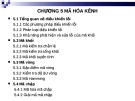

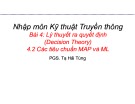






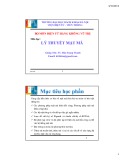
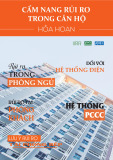









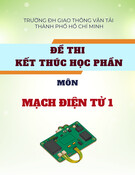

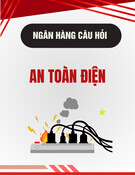
![Bộ tài liệu Đào tạo nhân viên chăm sóc khách hàng tại đơn vị phân phối và bán lẻ điện [Chuẩn nhất]](https://cdn.tailieu.vn/images/document/thumbnail/2025/20251001/kimphuong1001/135x160/3921759294552.jpg)

